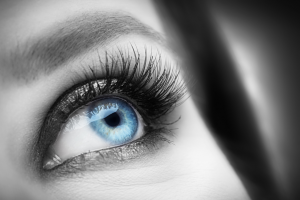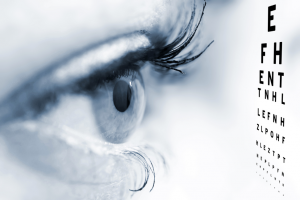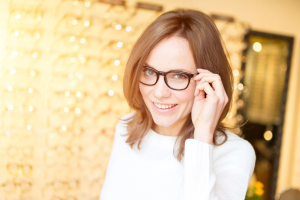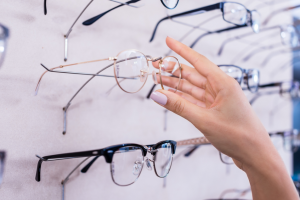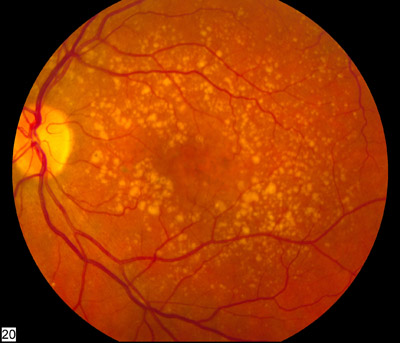
During the winter, light levels in general can be low. Many people find it more of a struggle to see clearly especially during these months. Insufficient task lighting can mean everything is more difficult. You can improve things considerably by having an eye test and ensuring you have the right glasses.
Glasses will actually make a massive difference to a wearer’s life. Essentially they function by correcting what is termed: ‘errors of refraction’. What are these errors? Well, they are split into main groups
- Myopia or short sight
- Focus change or accommodation
- Long sight (hypermetropia/hyperopia)
- Presbyopia
- Astigmatism
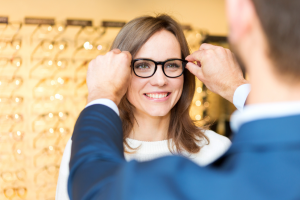
With the massive demands we place on our eyesight every day it is worth treating eyes with considerable respect and consider if they might need some additional help. Read on to discover why you may be asking ‘Do I need glasses?’ and if not, why you should.
Myopia
Can you see things clearly when they are close to you but when you look into the distance everything is blurred? Does that sound familiar? Then it is likely you are myopic and should have an eye test to determine the extent of your short sightedness. Some find that things only become distinctive when they are within 5-10 cms of the eye.
This doesn’t necessarily mean you will need to wear glasses all the time. You may choose to use them to watch a screen, in the cinema or television and driving of course. Some find that close work is easy enough without them. But the difference will be like someone having ‘cleaned the windows’!
What about Reading Glasses?
These are very useful for near vision. If you are a hobbyist, model maker, knitter, embroiderer, avid reader or just someone who loves jigsaw puzzles and crosswords you may well find a pair of near sight or ‘reading glasses’ will brighten up your world. It can certainly make threading a needle or finding that tricky piece so much simpler and quicker.
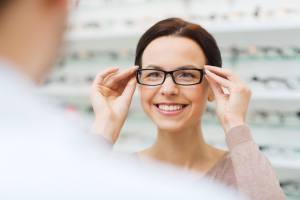
It’s a fact that after 40 – 45 years of age there is some degeneration in eyesight and many approaching middle age will require glasses. So why struggle without? Don’t be tempted to buy off the shelf ‘reading glasses’ as the quality can be questionable and potentially harmful to your eyes.
Accommodation
This is not about where you live! Answer these two questions:
- Do your eyes struggle to focus when you have been looking at a computer keyboard for any length of time?
- Do you struggle to focus when you have been reading and someone calls to you and you look up?
This is what accommodation means in this context. As we age it becomes slightly more difficult to change focus and glasses can make a tremendous difference to our every day lives; so why continue to struggle when there is a simple and practical solution?
Long sight
Means people have no difficulty seeing a number plate at a distance of say 6 metres. Yet ask them to read a menu and it is a different story. You may find you will not need glasses all the time only when reading or doing close work.
Presbyopia

If you don’t want to know this then look away now! Presbyopia is about the degeneration of the eye. Call it ageing if you like. You will notice it is difficult to read at arm’s length and this is when varifocals and bifocals can come into their own. At this point it is a great idea to make eye checks more regularly as they can be such an indicator of overall health. We may not be aware just how much our eyes are deteriorating but a professional can help.
Astigmatism
These are interesting because they vary tremendously between individuals. You may find your cornea is slightly different in shape from what is considered a normal curve. Think of it like this. Your cornea might be shaped like a rugby ball as compared to the usual soccer ball shape. If you were paying attention in Physics class you will know this change in shape can mean your eyes vary in their power and sometimes things can appear quite blurred. This is easily corrected by the right pair of glasses.
The problems associated with all of these conditions can be easily solved; and with the huge range of lenses, light frames and fashionable glasses you can have a new image and see your world clearly.
Consult your optician if you have any questions at all about any of these conditions. We are always here to help.






